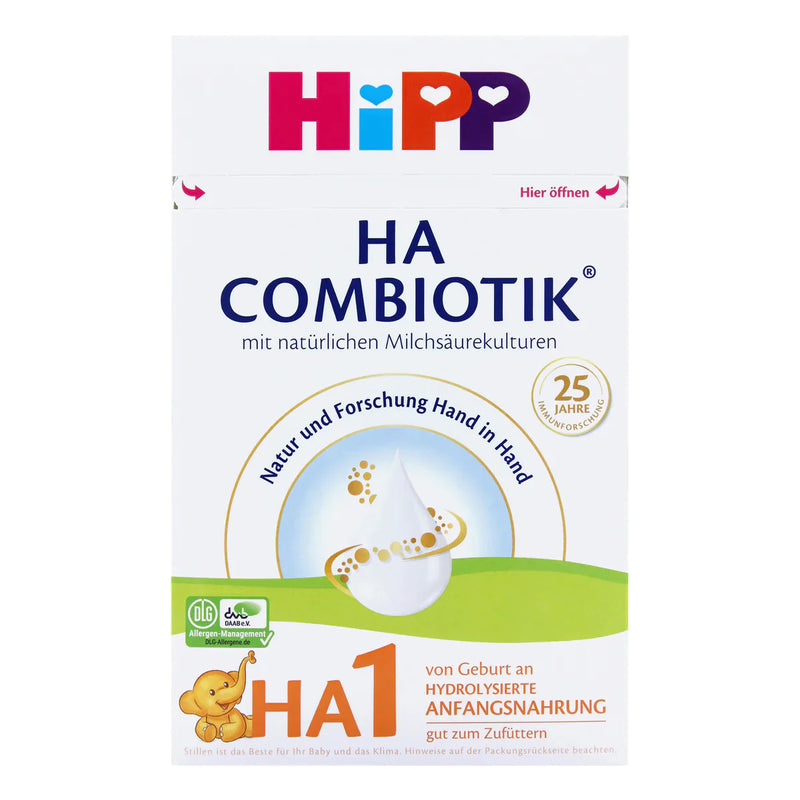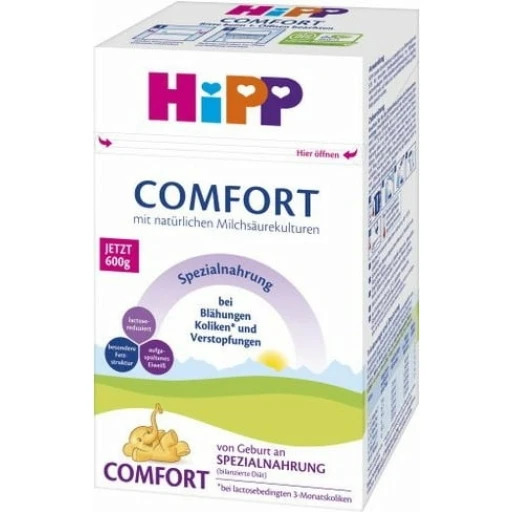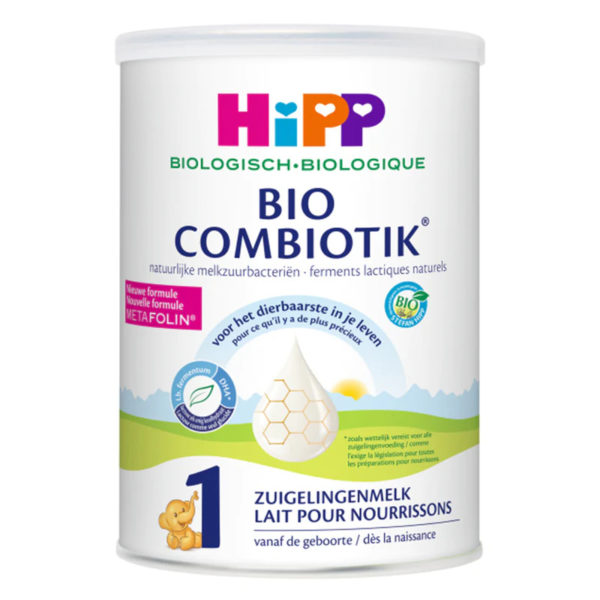HiPP HA 1 COMBIOTIK®, nature and research hand in hand.
- With natural lactic acid cultures (L. fermentum) – originally obtained from mother’s milk Breast milk contains a variety of natural cultures that can vary from person to person
- Valuable fiber GOS = galactooligosaccharides derived from lactose
- LCP (Omega-3 and -6)
- With Metafolin®
- With broken down protein that is better accepted by the baby’s immune systeem
Can HA diets reduce the risk of allergies? Milk protein can be a key factor in triggering allergies. With HA foods, the protein in the milk is broken down in a special manufacturing process in such a way that protein building blocks are created that the baby’s organism perceives as less alien. In this way, HA foods help to reduce the risk of allergies.
The protein used in HiPP HA COMBIOTIK® infant formula is heavily split and ultrafiltered and was tested in a prospective observational study with regard to allergy prevention. It is crucial for success that you remain consistent in the first 4 to 6 months of life. Even small amounts of infant milk formula with normal, non-split protein can lead to sensitization and thus jeopardize the benefits of a low-allergen diet. Please note: Even a low-allergen diet cannot offer 100% protection, but it does reduce the risk of allergies.
Breast milk promotes a healthy intestinal flora. This can protect against allergies. In addition to milk protein, the child’s intestinal flora also seems to play an important role in the fight against allergies. Studies have shown that the composition of the intestinal flora of allergic and non-allergic children shows significant differences. The intestinal flora of children with allergies usually contains more undesirable bacteria, while the number of good lactic acid bacteria is lower than in non-allergic children. A healthy intestinal flora based on the model of breastfed babies seems to have a decisive influence on the avoidance of allergies.
Please note:
- HiPP Hypoallergenic Stage 1 is a specialty formula, not a medical treatment. Before deciding to use it, we advise consulting your pediatrician.
Ingredients
Lactose, vegetable oils (palm oil❤, rapeseed oil, sunflower oil), hydrolyzed Whey protein, starch, galactooligosaccharides from lactose, calcium orthophosphate, potassium chloride, emulsifier: citric acid esters of mono- and diglycerides of fatty acids, potassium hydroxide, fish oil¹, sodium hydroxide, L-tyrosine,L-phenylalanine, M. alpina oil¹, magnesium carbonate, choline, L-tryptophan, vitamin C, inositol, iron sulfate, L-carnitine, zinc sulfate, pantothenic acid, natural lactic acid cultures (Limosilactobacillus fermentum hereditum ®)², niacin, calcium carbonate, vitamin E, copper sulfate, vitamin B1, vitamin A, vitamin B2, vitamin B6, manganese sulfate, potassium iodate, Metafolin®³ (calcium L-methylfolate), Vitamin K, Sodium Selenate, Biotin, Vitamin D, Vitamin B12. ¹LCP (Omega-3 and -6) = long-chain polyunsaturated fatty acids ²Lactobacillus fermentum CECT5716 ❤ Palm oil from sustainable cultivation, certified by independent control bodies
Preparations
New preparation
When preparing baby milk formula, carefully follow the instructions for use. Improper preparation or storage of the prepared bottle over a longer period of time can lead to health problems, e.g. due to the growth of unwanted germs. Therefore, prepare the food fresh before each meal and feed it immediately. Do not reuse leftover food. Thoroughly clean the bottle, teat and ring. Close the opened bag tightly again after removing the product, store in a dry place at room temperature and use up within 3 weeks. Do not heat food in the microwave (danger of scalding).

-
Boil fresh drinking water and cool it down to approx. 40°-50°C*.
-
Pour the desired amount of boiled water (see table) into a bottle.
-
Measure recommended amount of powder (see table). Fill measuring spoon loosely and wipe off. Add powder to the water.
-
Close the bottle and shake vigorously several times.
5. Cool down to drinking temperature of approx. 37°C. Check temperature *In order not to damage the natural lactic acid cultures (lactobacilli), please do not prepare the food with water that is too hot.
Drinking amount and dosage: Drinking amount per bottle can vary individually. The recommended drinking quantities and number of bottles per day are guidelines. Your baby does not necessarily have to empty the bottle. Please only use the enclosed measuring spoon! 1 measuring spoon corresponds to 30ml of water.






Reviews
There are no reviews yet.